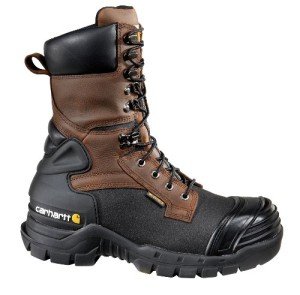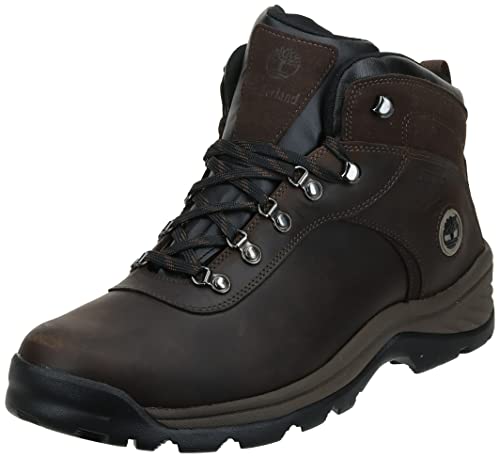Understanding the Purpose: Differentiating Hiking Boots from Survival Boots
When it comes to outdoor activities and adventures, having the appropriate footwear is crucial. Whether you're planning a hike through the scenic mountains or preparing for a survival expedition in the wilderness, having the right boots is essential for your safety and comfort. In this article, we will explore the differences between hiking boots and survival boots, delving into their unique features and purposes.
Hiking Boots
Hiking boots are designed specifically for walking and trekking on various terrains. These boots are built to withstand the rigors of long hikes and protect your feet from rough trails, rocks, and debris. Comfort, stability, and support are the primary focus when it comes to hiking boots.
One of the defining features of hiking boots is the inclusion of ankle support. This support system helps minimize the strain on your ankles, preventing injuries even on uneven ground. Additionally, hiking boots offer advanced traction through their rugged soles. The deep lugs on the outsoles provide excellent grip, ensuring you maintain traction on slippery surfaces.
When selecting hiking boots, it's important to consider factors such as the duration and intensity of your hikes, the terrain you'll be traversing, and the weight of your backpack. These factors will help determine the level of ankle support, waterproofing, and breathability you require from your hiking boots.
Survival Boots
In contrast, survival boots are designed for extreme conditions and situations where your safety and survival are at stake. These boots prioritize durability, protection, and adaptability to ensure you can withstand harsh environments and potential emergencies.
Survival boots are typically made from stronger materials than hiking boots, such as full-grain leather or reinforced synthetic fabrics. They are built to be highly resistant to abrasions, punctures, and extreme temperatures. Additionally, survival boots often feature additional insulation and waterproofing to keep your feet warm and dry in challenging weather conditions.
While survival boots may provide ankle support, their primary focus is on allowing flexibility and agility to ensure quick movements, allowing you to respond swiftly in emergencies. They are also designed to accommodate various accessories, such as crampons for icy surfaces or special attachments for rappelling or climbing, making them versatile in a wide range of survival scenarios.
Carhartt Men's CMC1259 10" Pac Boot, Brown Oiltan/Black
Stay warm and prepared with the durable Carhartt Men's CMC1259 10" Pac Boot in Brown Oiltan/Black
Product information
$239.99
Product Review Score
4.23 out of 5 stars
262 reviewsProduct links
Analyzing Features: Key Distinctions between Hiking Boots and Survival Boots
While hiking boots and survival boots may appear similar at first glance, there are distinct features that set them apart. Let's delve into the differences between these two types of boots, ensuring you choose the correct one for your specific needs.
1. Purpose and Intended Use
One of the primary distinctions between hiking boots and survival boots lies in their purpose. Hiking boots are designed for recreational activities, particularly trekking on established trails or moderate terrains. On the other hand, survival boots focus on providing maximum durability, protection, and traction for challenging environments, such as extreme weather conditions, rough terrains, or off-trail navigation.
2. Durability
Survival boots are built to withstand harsh conditions and offer exceptional durability. They are constructed using heavy-duty materials like full-grain leather, reinforced stitching, and rubber toe caps to enhance resistance against wear and tear. Comparatively, hiking boots prioritize lightweight construction and flexibility to enhance comfort during long hikes.
3. Waterproofing and Insulation
In survival situations, having waterproof boots is crucial for keeping your feet dry and comfortable. Survival boots often feature advanced waterproofing technologies like Gore-Tex membranes or treated leather, ensuring your feet remain dry in wet environments. Moreover, survival boots specialize in insulation to keep your feet warm in extremely cold conditions, which is not a primary focus for hiking boots designed for moderate temperatures.
4. Traction and Outsole
Survival boots are designed with aggressive outsoles, featuring deep lugs and specialized patterns to provide maximum grip and traction on various surfaces. This is specifically beneficial when traversing rocky, steep, or slippery terrains. In contrast, hiking boots have a less aggressive outsole with moderate traction suitable for well-maintained trails and smoother surfaces.
5. Ankle Support and Protection
Ankle support is another factor that sets hiking boots and survival boots apart. Survival boots typically have higher-cut designs and added padding around the ankles to offer optimal support and protection against sprains or injuries when navigating through rugged and uneven landscapes. Hiking boots, while offering some ankle support, are primarily designed for comfort during long hikes on less demanding terrains.
6. Additional Features
Survival boots often come equipped with extra features, such as a reinforced toe cap, shank or steel midsole for added protection against impacts or punctures, and a more rigid structure to enhance stability. They might also offer additional attachments like D-ring hooks for lacing options or compatibility with crampons in icy conditions. Hiking boots, in comparison, focus on lightweight construction and features like cushioning, breathability, and flexibility for extended comfort.
Understanding the distinctions between hiking boots and survival boots is crucial when selecting the appropriate footwear for your outdoor activities. While hiking boots provide comfort and support for recreational hiking, survival boots offer durability, protection, and advanced features needed to tackle extreme or unpredictable conditions. Choose wisely, based on your intended use and the challenges you expect to encounter, and embark on your adventures with confidence.
Timberland Dark Brown Waterproof Hiking Boot - Men's
Stay prepared for any scenario with these waterproof men's hiking boots in dark brown from Timberland
Product information
$128.51
Product Review Score
4.75 out of 5 stars
156 reviewsProduct links
Final Words
Understanding the differences between hiking boots and survival boots is crucial when selecting appropriate footwear for your outdoor adventures. Consider your intended purpose, durability requirements, and comfort preferences to make an informed decision. Both types of boots have their own advantages and are designed to meet specific needs. Choose wisely and embark on your outdoor journeys with confidence!





